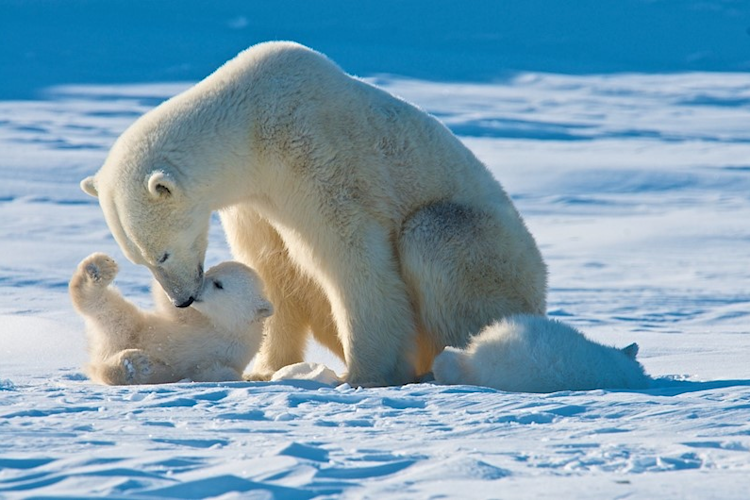Q: Three years later, you were appointed executive director after Robert Buchanan retired. What were some of your early decisions in that role?
My first decision was to hire polar bear biologist Geoff York, now our senior director of conservation, to bring more science and research capabilities to the organization. Although Polar Bears International had always helped fund research, and we were lucky to have Steve Amstrup on staff, I thought it was important to further build on that. Geoff had been a polar bear researcher in Alaska but also had the interest and capability on the polar bear management side and had worked with another wildlife nonprofit, leading WWF”s Arctic Program. Like our chief scientist, Dr. Steve Amstrup, he understood the need to link science to conservation. He could be in both lanes.
After that, I brought on biologist Alysa McCall, now our director of conservation outreach. The decision to strengthen the science team helped put us where we are today. It helped build our credibility and positioned us to serve as policy experts and leaders in polar bear conservation. This not only includes research projects that inform conservation but initiatives to help protect polar bear moms and cubs—the most vulnerable groups—and efforts to help polar bears and people coexist, which is increasingly important in a warming Arctic. We currently have 10 scientists on staff in four countries, all working to ensure a future for polar bears. Through it all, we’ve retained our nimbleness and have earned a reputation for tech innovations that are helping to advance polar bear science.
Q: Polar Bears International has a strong education and outreach arm as well. How has that grown during your tenure?
A: When I joined the staff, Robert had created early versions of innovative programs that have become real powerhouses. For example, Polar Bears International was a trailblazer in online learning through its Tundra Connections webcast program. However, it was fairly primitive back then, largely due to tech limitations, basically featuring panelists on a Tundra Buggy talking and answering questions. Our Climate Alliance training program—which empowers zoo staff to communicate effectively with the public about polar bears, sea ice, and climate change—also existed, although it was originally called Leadership Camp and the course wasn’t as in-depth as it is today.
Our Climate Alliance program now includes a months-long online training course and features facilitators from the National Network of Ocean and Climate Change Communications, who train participants in using tested messaging on climate change. Also, thanks to tech advances, we’re able to mix images and short videos into our Tundra Connections broadcasts, making them highly engaging.
We’re also able to filter in live footage from the Polar Bear Cams, which we launched in partnership with explore.org in 2011, bringing the bears to the world. BJ Kirschhoffer, our tech guru, was a big part of setting up the cams on the tundra. Later we added Beluga and Northern Lights Cams, helping people fall in love with the Arctic.
Between the cams and the webcasts, we now reach roughly 3.2 million people around the world every year. In addition, we have a top-ranked website that is heavily used by students, teachers, the media, and the general public, helping us meet our education goals. We also have amazing media coverage, reaching 5 billion people around the world last year alone—cutting through the digital clutter to share the science and highlight the need to act on climate change.




















